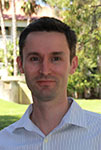Fluorescence application to hydrocarbon monitoring in North West Shelf marine waters
Felicity Harrison A , Riley McAuliffe A , Jose Romero A , Keith Stubbs B and Carolyn Oldham BA GHD Pty Ltd
B The University of Western Australia
The APPEA Journal 55(1) 345-350 https://doi.org/10.1071/AJ14027
Published: 2015
Abstract
The application of fluorometry to hydrocarbon detection in marine waters is a standard procedure in many parts of the world. This technology is advantageous because spatial and temporal variations in hydrocarbon distributions can be acquired readily and rapidly in a cost-effective manner compared to traditional sampling methods.
Its application to North West Shelf marine waters has been examined through two recent research studies. In the first study, the fluorescent properties of North West Shelf hydrocarbons were compared to those from North America. In general, peak fluorescence of North West Shelf samples are lower than North American and European hydrocarbons. Hence, fluorometer specifications (e.g. excitation and emission wavelengths) need to be tailored for hydrocarbon detection within North West Shelf waters.
The second study measured low background fluorescence of a representative region of the North West Shelf using the fluorometer specifications recommended in the first study. This indicates that background fluorescence is unlikely to affect hydrocarbon detection in the marine waters of the North West Shelf.
These studies support the use of fluorometry as a technique to reliably detect and to monitor unplanned (e.g. spills) and planned (e.g. producted formation water) hydrocarbon discharges across the North West Shelf.

Felicity Harrison has a Bachelor of Environmental Engineering degree from the University of Western Australia. She completed her Honours thesis in collaboration with GHD, titled Fluorescent signatures of North West Shelf crude oils and condensates, in November 2012, and has generated much interest in industry partners from this project. Felicity has three years’ experience in the oil and gas industry, working in both construction (at AJ Lucas for Chevron Australia) and consulting. She now works at GHD in the Marine and Ecology Service Group, delivering high-quality OSCPs and Environmental Plans to clients such as Apache, Santos and CalEnergy. |

Riley McAuliffe joined GHD in 2012 as a Vacation Student, and in November 2013 graduated as an Environmental Engineer from the University of Western Australia. She completed her Honours thesis on the spatial and temporal variability of background fluorescence across the North West Shelf in WA, and the project has generated much interest from industry partners. Riley now works in the Pollution Management Group at GHD Pty Ltd, and is involved in contaminated land, air quality and environmental auditing projects. |

Jose Romero has more than 20 years of research and professional experience in water quality, marine/aquatic ecology, hydrodynamics, and numerical modelling and management of large marine monitoring programs. Jose has also prepared numerous Environmental Impact Assessment technical reports for State and Commonwealth approvals submissions, marine management plans for a range of operational and construction activities, and regulatory compliance reports. |

Keith Stubbs completed his BSc and PhD studies at the University of Western Australia before undertaking post-doctoral studies in Canada. He presently holds an Australian Research Council (ARC) Future Fellowship to further his research. Keith’s interests are in developing chemical tools and using spectroscopic analysis to study various systems for industrial and biological applications. |

Carolyn Oldham is Professor of Environmental Engineering at the University of Western Australia. With degrees in both chemistry and engineering, for the past 20 years she has worked on contamination in the marine environment, in freshwaters and in groundwater. Carolyn has worked with the mining sector, and the oil and gas sector, and is now involved in urban contamination challenges. Carolyn was an academic supervisor for the two projects summarised by this paper. |


